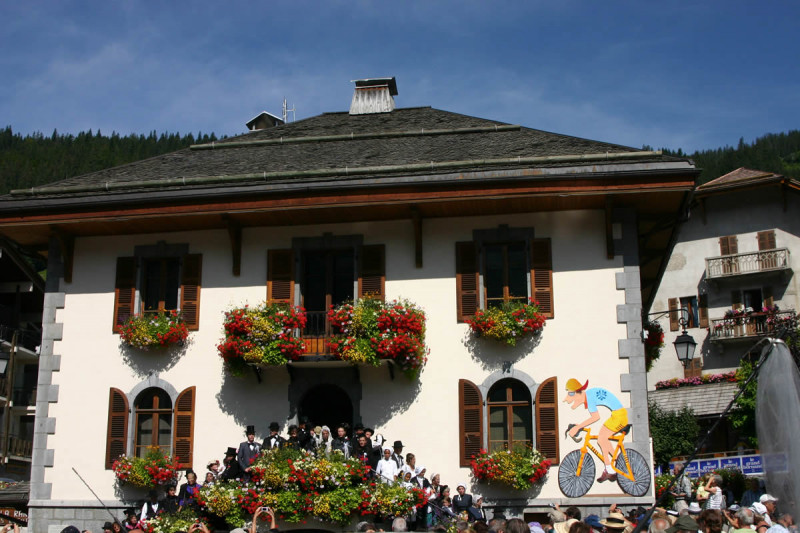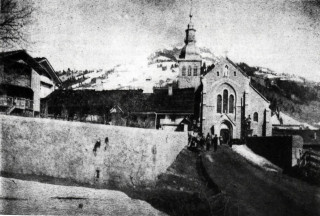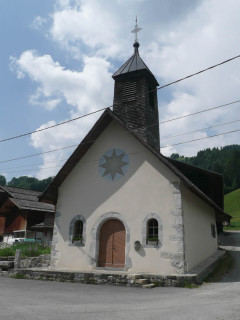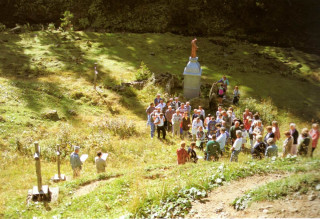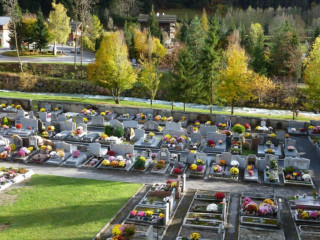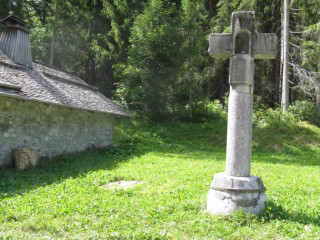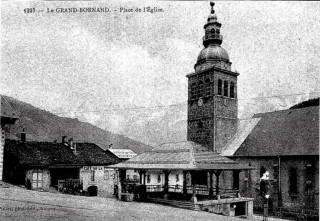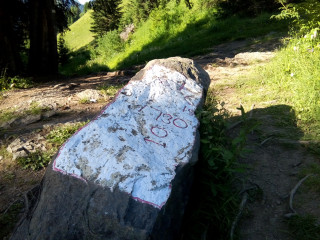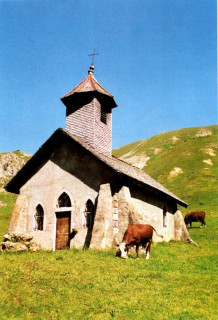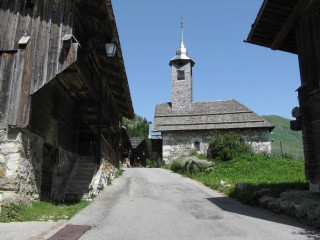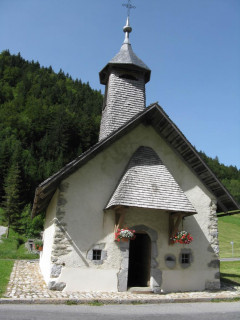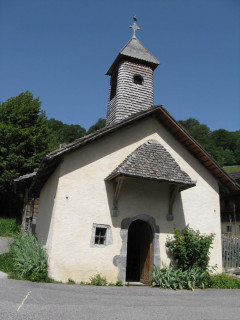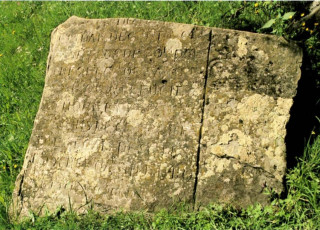The Mairie (Town Hall)
Contact
21 route du Chinaillon
BP 8
Le Grand-Bornand Village
74450
Le Grand-Bornand
The Town Hall is a stone building, typical of early XX century architecture. It houses all the municipal services and the meeting room for the village council.
Since the end of the Middle Ages, a union, representing the inhabitants of Le Grand Bornand, used to meet regularly in front of the church. By the XVIII century, we know that they used to meet in the house of Maitre Tochon, a soliciter's clerk. This is the site of « Les Deux Guides » today.
In 1856, the first village hall was built just below the church, where the car park is today. This stone building housed a prison underneath and a meeting hall on the first floor.
In 1905, the law establishing the separation of the Church and the State required that there be a public school in the village and so the former Town Hall became the new public school, with 2 classrooms for boys and girls. As a result, a new Town Hall was built, designed by the departmental architect, Ruphy.
A Post Office and telegraph office were at the front of the new Town Hall and the fire service was situated where the public entrance is today. Since the 1970's, only the municipal services are located within the Town Hall.
In 1856, the first village hall was built just below the church, where the car park is today. This stone building housed a prison underneath and a meeting hall on the first floor.
In 1905, the law establishing the separation of the Church and the State required that there be a public school in the village and so the former Town Hall became the new public school, with 2 classrooms for boys and girls. As a result, a new Town Hall was built, designed by the departmental architect, Ruphy.
A Post Office and telegraph office were at the front of the new Town Hall and the fire service was situated where the public entrance is today. Since the 1970's, only the municipal services are located within the Town Hall.
All year round
Description
- Period :
- 20th C
- Historical heritage :
- Historic patrimony
- House
Facilities and services
- Parking :
- Parking
- SITRA services :
- Services
- Services
- Services
- Services
- Services
- Services
Localisation
FICHE_INFO_SIMPLE_LIBELLE_DESTINATION
Mairie
21 route du Chinaillon
BP 8
74450
Le Grand-Bornand
GPS coordinates
Latitude : 45.942086
Longitude : 6.426901
Tarifs
Free
View also
After 60 years of building work, undertaken and financed by the local community,it was consecrated in 1877. Built in the neo-gothic style of the XIX century, the architecture is typical of the golden age of the Catholic church.
The chapel of Le Bouchet, in the heart of the Bouchet valley, was founded in 1704 after a flood. It boasts a beautiful altarpiece, dating back to the XVIII century.
The Stations of the Cross pilgrimage at La Duche originated in 1888, linking the chapel of La Duche with St Bruno's oratory, the site of a miraculous spring.
The original cemetery was situated for a long time immediately around the church. In the mid-XX century, it had to be relocated so that a new village square could be built in front of the Tourist Office, the Town Hall and the church.
The cross at Le Clos du Pin is unusual for two reasons : firstly, this stone cross is the oldest of all the Le Grand Bornand crosses (dating from 1500) and secondly, and for the same reason, it has been classified since 1944 as a heritage monument.
The weekly market at the Grenette, the old grain market of Le Grand Bornand, characterizes the heart of the old town square. All sorts of concerts and events also take place here, such as concerts given by the local brass band and many local celebrations.
The inscribed border stone, at the foot of the dale of Tardevant, marks the limit between the villages of Le Grand Bornand and La Clusaz. This stone is about 1m. long and is dated 1755.
The chapel of la Duche is the oldest of Grand Bornand. Based in the end of the XVIIth century,it is reconstructed at the end of the XIXth century. Itis dedicated in particular to several agrarian saints: saint Anne, saint Grat and saint Guérin.
Founded in 1677, the chapel is nestled in the heart of the old village of Le Chinaillon. Despite major renovation work to the building in 1977, it has retained its traditional appearance.
Located in the heart of the hamlet of Les Plans, the chapel of the same name was founded in 1702 after the flooding of the Borne river. From the chapel there is a wonderful view over the Aravis mountain chain.
Standing above the village of Le Grand Bornand, with panoramic views over the Aravis chain, the chapel of Le Nant Robert is well worth seeing. It was founded in 1762 and renovated on several occasions during the course of the XX century.
At the end of the Bouchet valley, just above the hamlet of Lormay, there is a stone testifying to events which took place during the French Revolution : priests refusing to swear allegiance to the Constitution were hidden by the local population.

